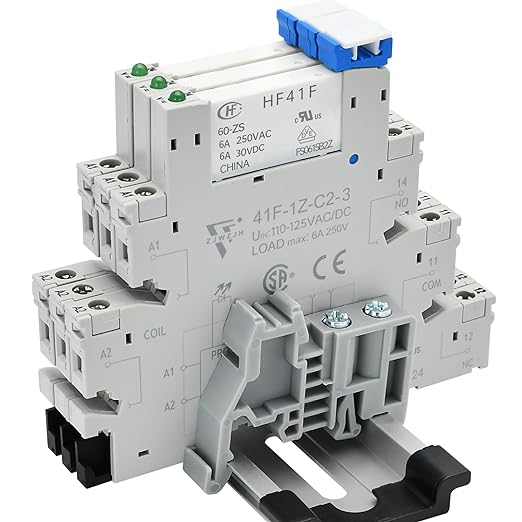What is a Relay?
A relay is an electrically operated switch. 'The electrical part of the relay is a coil that, when energized, acts as an electromagnet moving the switch. The images below are two commonly used to illustrate a relay coil.
Most relays will have at least five connections or terminals. Two are for the coil, one is for the common, one is normally closed (electrically coupled to the common), and the last is normally open. "Normally" refers to the switch's de-energized state, with no voltage on the coil.
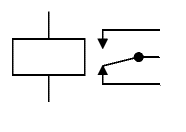
In this illustration, the middle connection is the common terminal. The top arrow is normally open, and the bottom is normally closed. That assumes the circuit is shown de-energized. In this case, the drawing is marked to indicate the state. You should always pay attention to the "state" of a circuit. In some cases, a circuit may be energized in its normal operating state, and a drawing may be illustrated to show the normal state of the complete circuit when energized. When working with relays, you must know a relay's state (energized or de-energized) when depicted in a drawing.
Some relays have a normally open or normally closed terminal, or both. To help identify which type of relay you are using or need, relays are classified by their form. There are dozens of forms, but let's only discuss three for now. All relays are shown de-energized.
Form A is normally open, NO
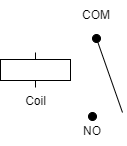
Form B is normally closed; NC
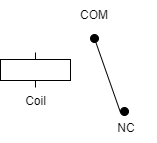
Form C has both NO and NC connections.
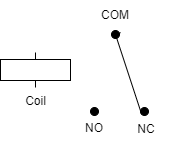
Relays have several uses in electrical circuits.
1. Switch a high-voltage circuit from a lower-voltage circuit. Below is an example of using a low-voltage system to switch a higher-voltage circuit. This example could be a fire alarm control panel, access control system, or HVAC control system.
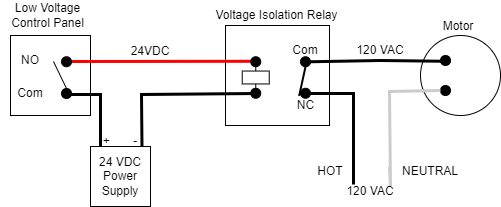
2. Switch a high-current circuit from a lower-current circuit. The fire alarm relay is rated for 120 VAC but limited to 1/2 amp, 500 mA. If you tried to run the motor power circuit without the relay, the fire system relay would fry. In this example, when a fire alarm goes off, the fire system relay activates, energizes the coil, and cuts power to the motor.

3. The drawing below shows a basic power monitor circuit. The siren will stay silent if the 120 VAC circuit has power. On power loss, the relay closes (because it is wired to the normally closed terminal), and the siren makes a noise.
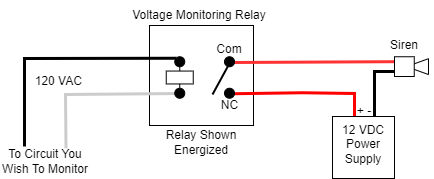
Relay Form Factor
Relays can come in many form factors, but three primary types are used in the low-voltage industry and the associated systems connected to low-voltage networks.
Functional Devices, Inc. manufactures a commonly used relay called a RIB (Relay In a Box). Available in many configurations with a wide range of coil voltages and current capacities, it is almost impossible to walk a commercial building without seeing RIBs in use.
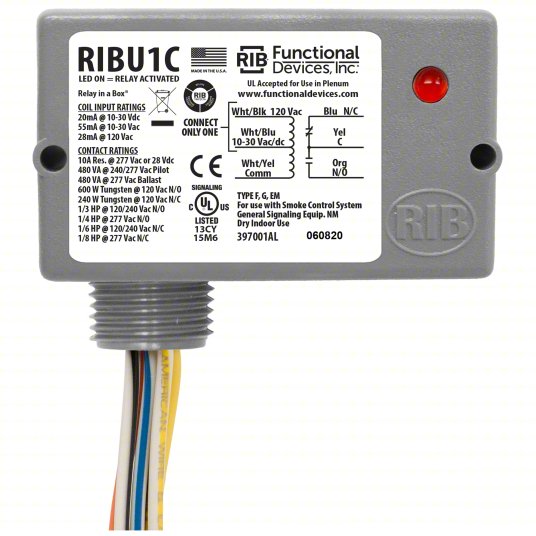
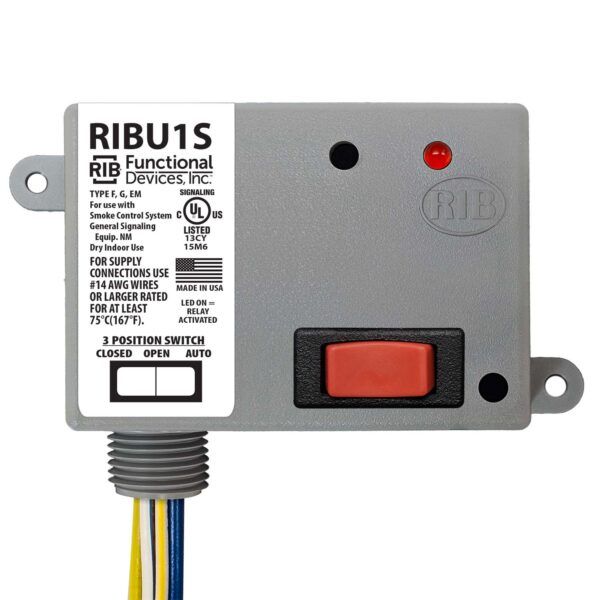
Ice Cube relays are a generic term referring to the clear cube shape of this relay format. They use a base that is secured to a rail or other flat surface. The circuit wires connect to the base, and the relay plugs into it. There is no standard for the plug or pin-out configuration. You must use relay modules that are compatible with the base installed.
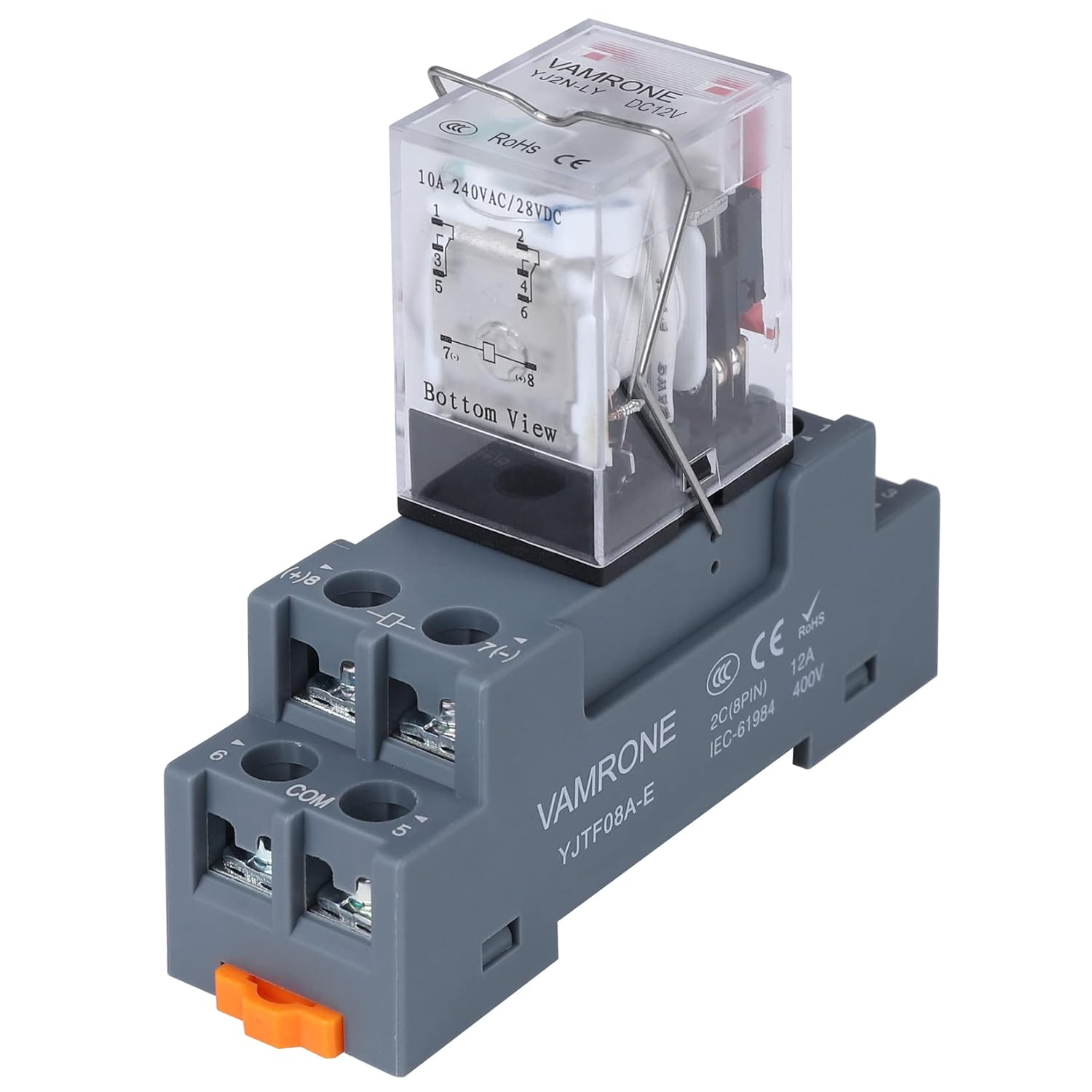
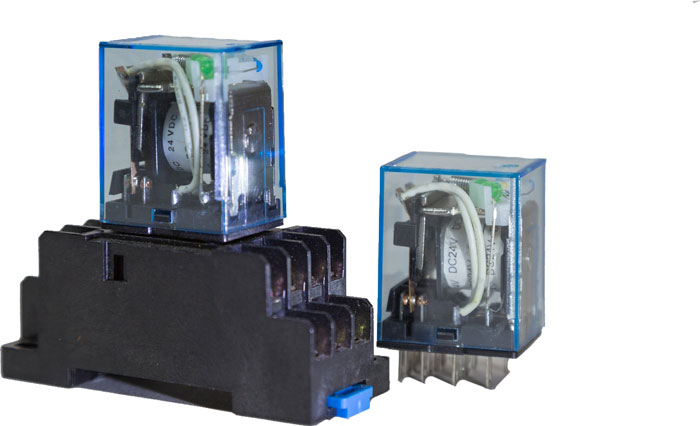
Rail Mount relays provide a thin form factor and often use a two-piece construction for easier servicing.

